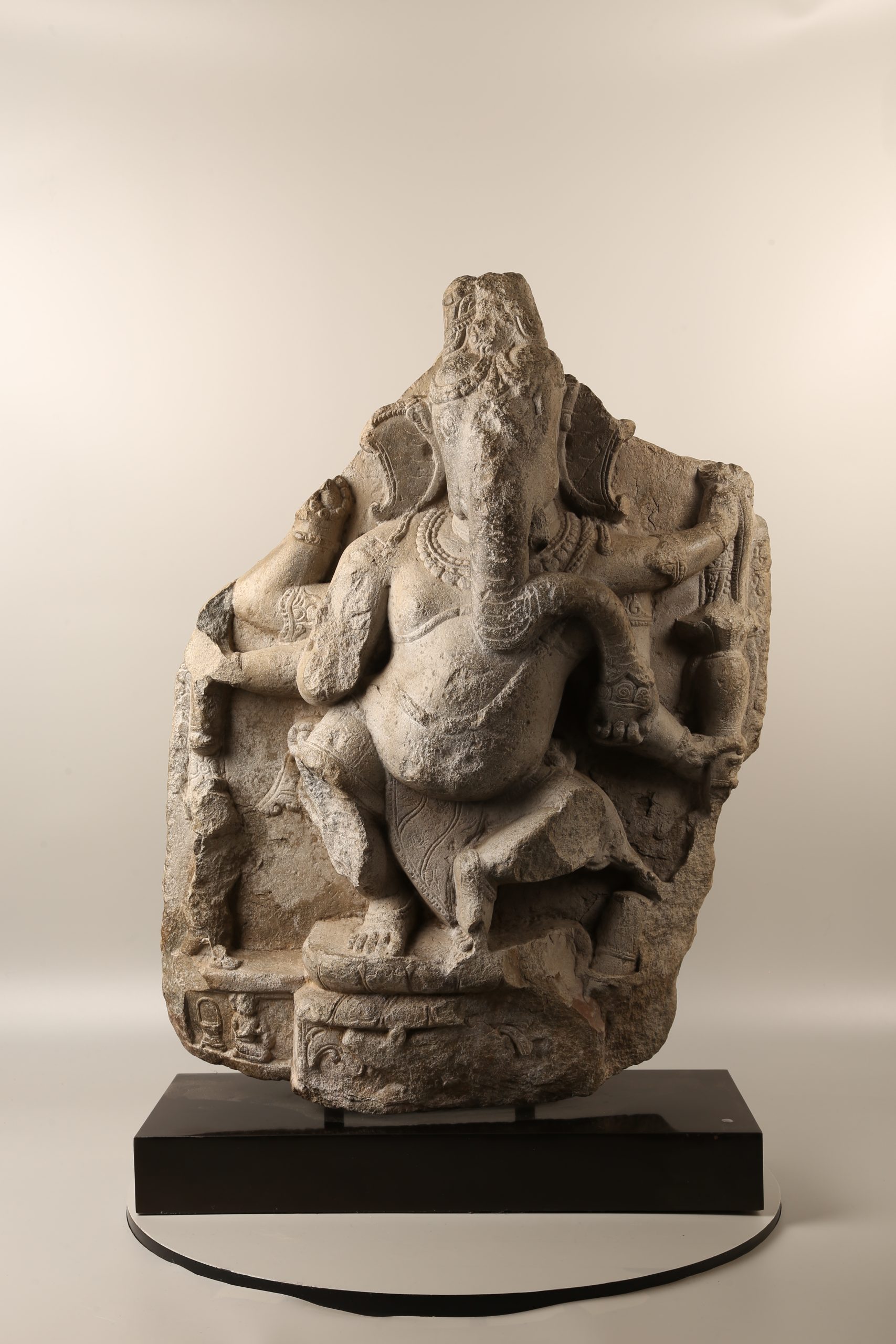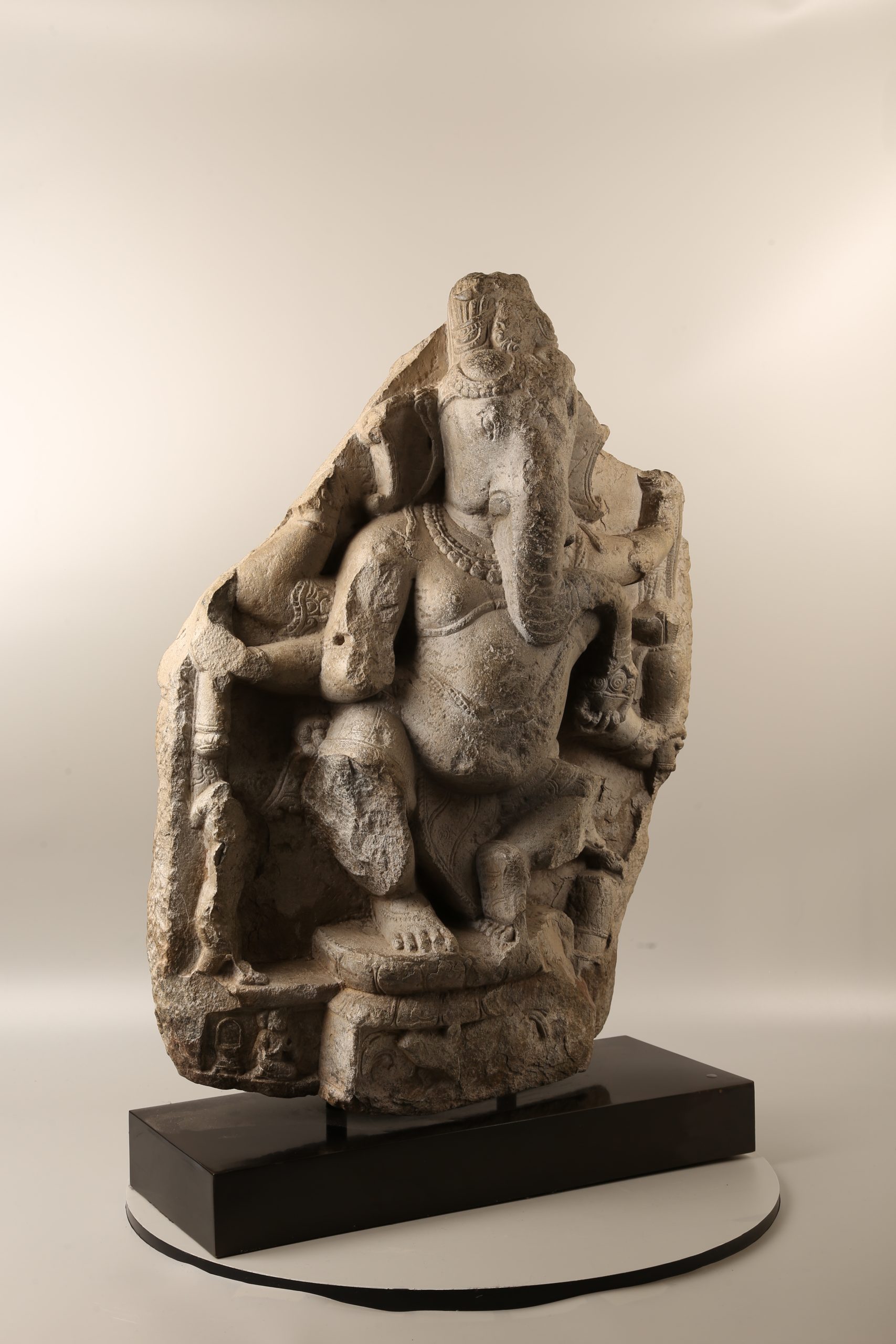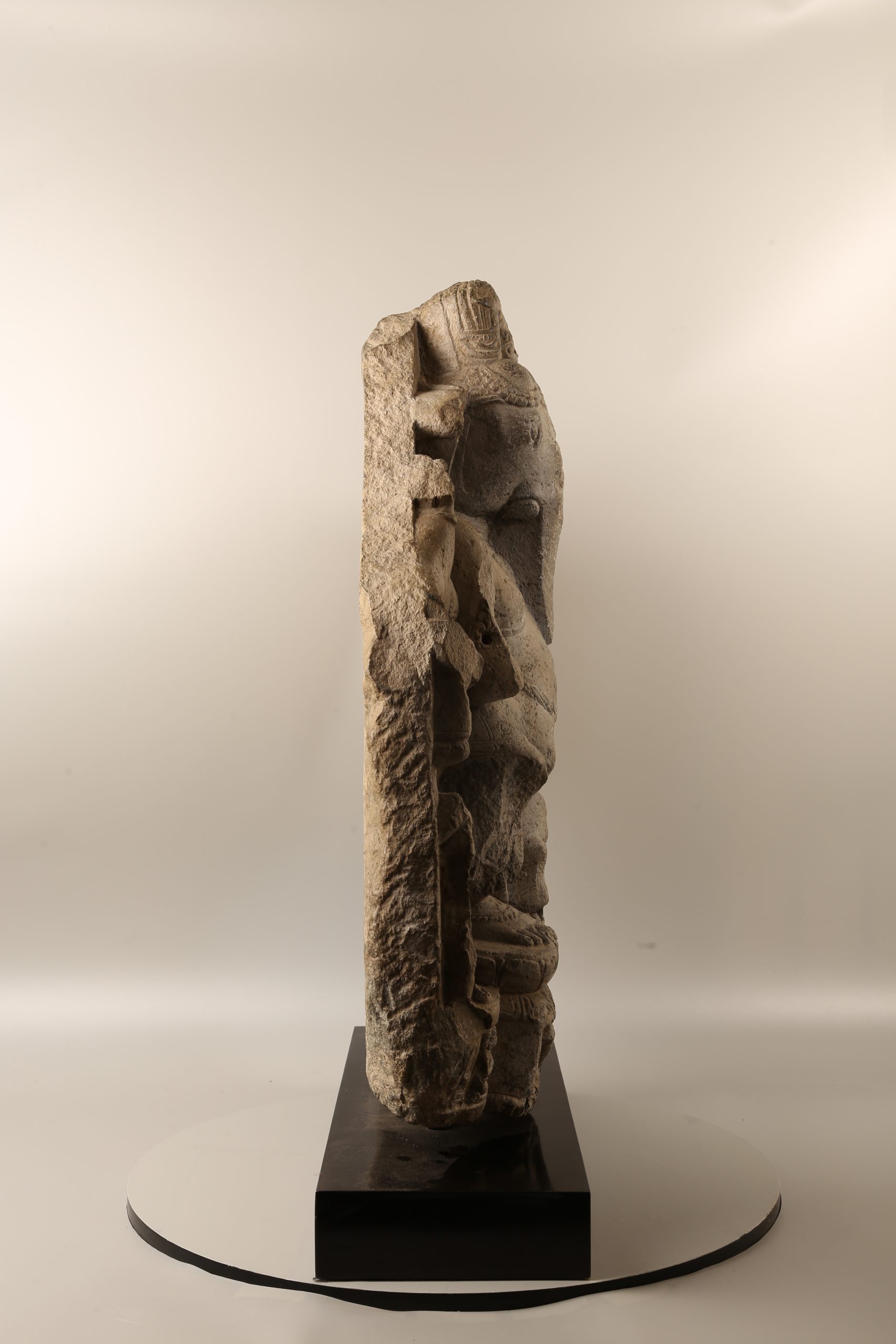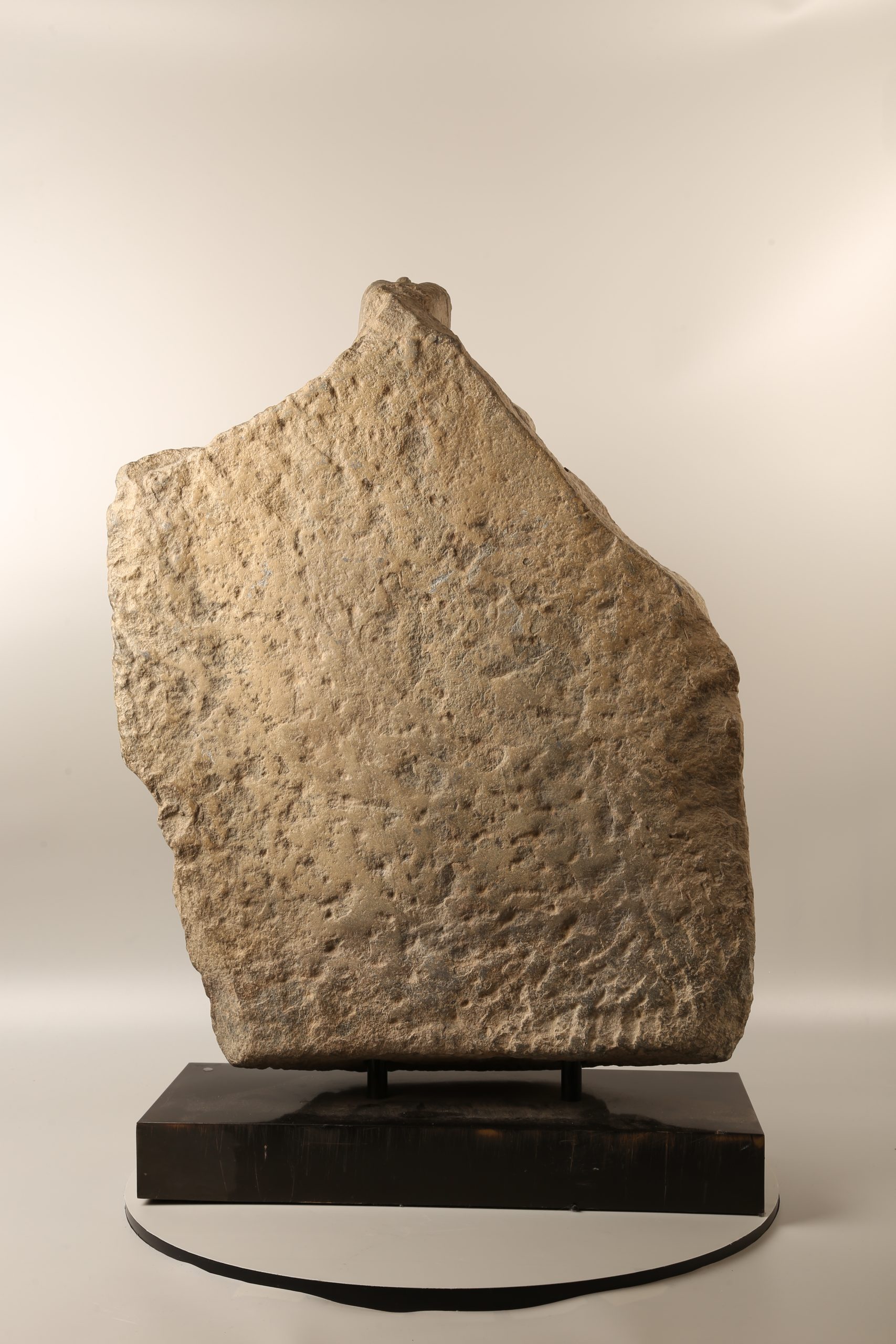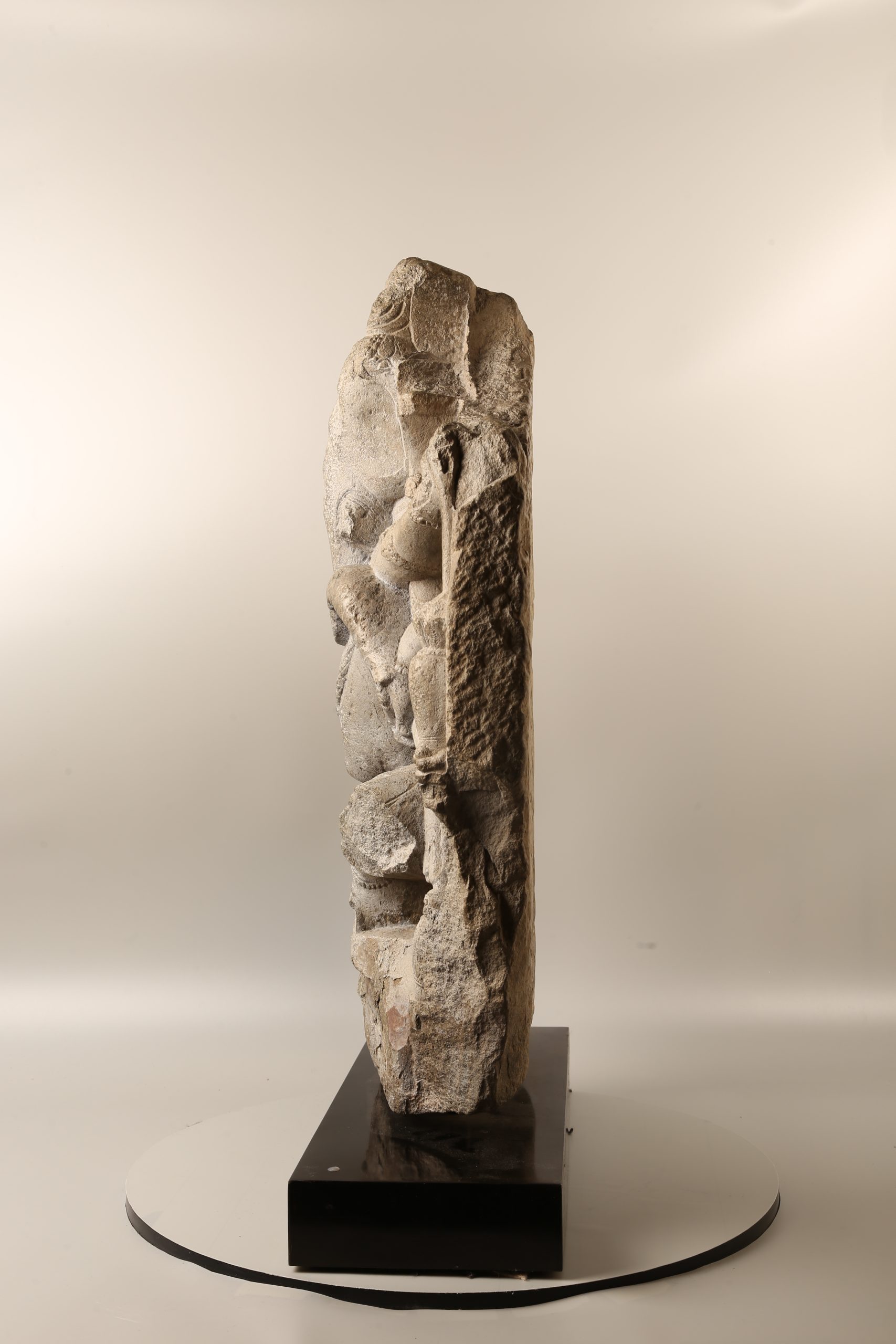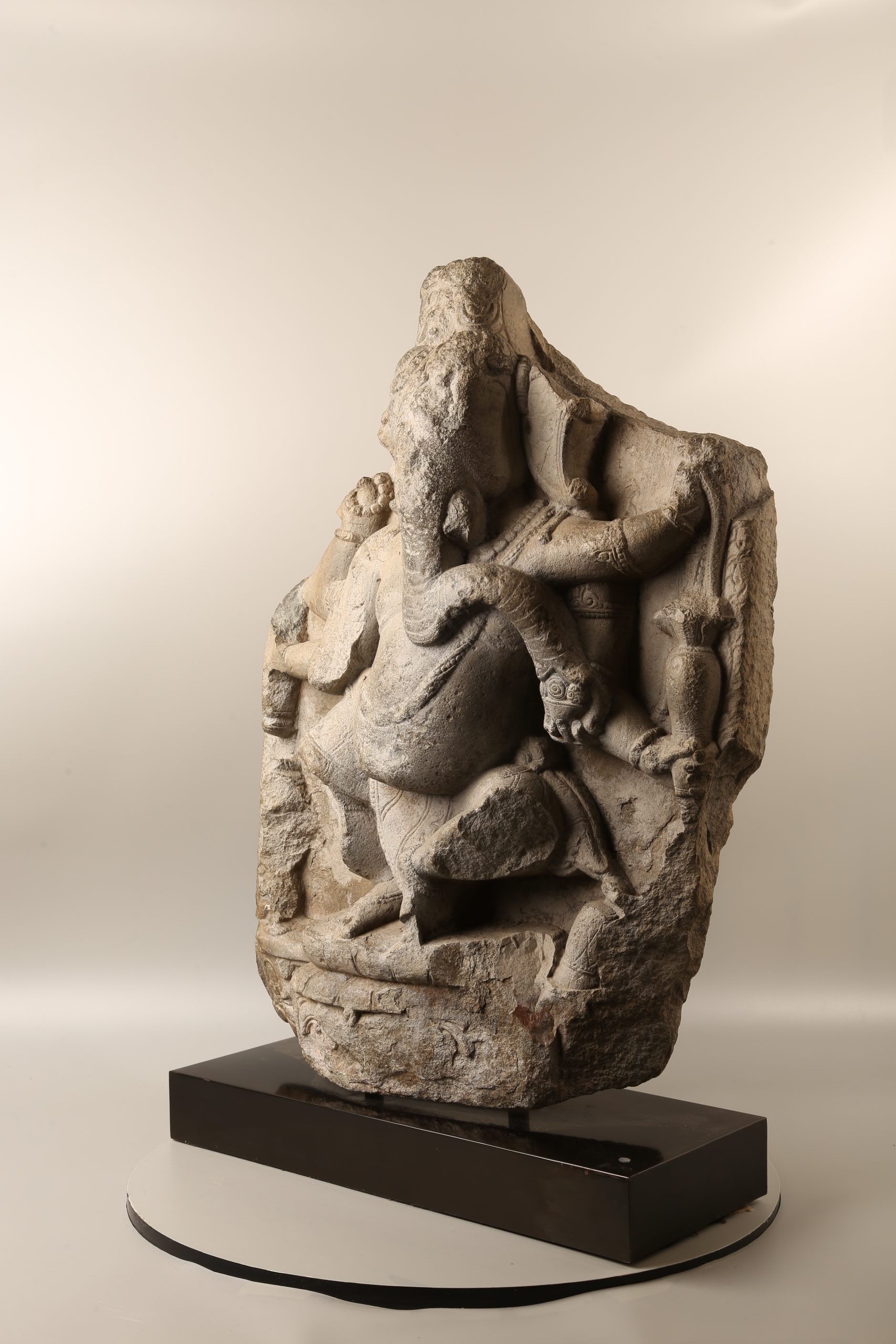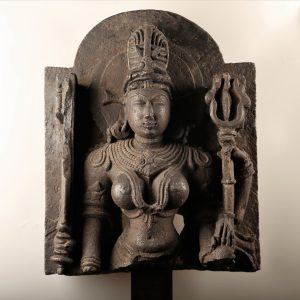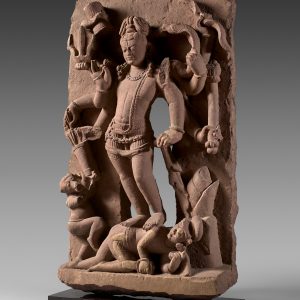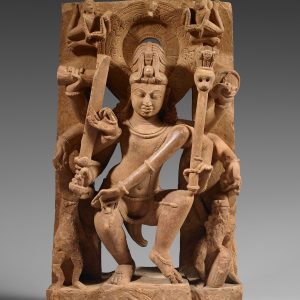Gaṇeśa dancing on a lotus flower
28 000,00€
Grey stone
Northern India
11th century, Pala period
H: 25,6 inch
360° view
Description
Gaṇeśa, a particularly venerated god
This fragment of decoration, carved in high relief, depicts Gaṇeśa dancing on a lotus flower, above a decorative frieze of small figures. A kneeling devotee is recognisable on the left, and in the centre an animal, whose very fragmentary appearance makes identification complex. Son of Śiva and Pārvatī, this elephant-headed god enjoys great popular fervour, and is venerated in the various streams of Hinduism. He is the one who removes obstacles and contributes to the prosperity of any enterprise. As a gourmet god, his devotees honour him with offerings, especially sweets, which are placed underneath the god’s statues.
The benevolence of the god conveyed through iconography
Gaṇeśa is shown here with four arms representing the four paths of knowledge according to the Vedas. Ancestral texts that constitute the foundations of both Hinduism and Buddhism, they are certainly at the origin of the mythology surrounding the god Gaṇeśa, particularly concerning his animal form. He holds in his hand the axe, paraśu, which is also one of Śiva’s attributes, systematically present on his representations. This axe is said to remove sorrows and agitations. It also holds the knot, pāśa, which serves to capture error. All these attributes corroborate the benevolent image of the god, ready to answer the prayers of the faithful.
A dynamic composition created through pure forms
Under the Pala dynasty, whose sovereigns were mainly Buddhist, religious diversity was nonetheless encouraged. Both Buddhist and Hindu temples were decorated with sculptures. Pala art emerged on the model of the Gupta idiom, which had a great posterityin India, and which also spread to China, Japan and Korea. These canons are thus reused to create a separate entity in the Pala period. Here, the sobriety of the forms, the elegance of the movement, are particularly admirable and make this Gaṇeśa a very fine example of Pala art. Despite his stoutness, the god sketches a gesture whose fluidity brings a particular expressiveness to the work. His trunk has a geometrical shape that also contributes to the dynamism of the work, and gives it a graphic aspect without equal.
The richness of the sculpted details
The purity of the body’s forms is complemented by the decorative treatment of the ornaments, in particular the tiara on the god’s head, as well as the necklaces around his neck and the bracelets on his arms. His almost imperceptible clothing reflects the desire of Indian artists to create luminous images, in accordance with a religious requirement mentioned in the texts.
Provenance: Gantner museum collection , then Dodier gallery.

